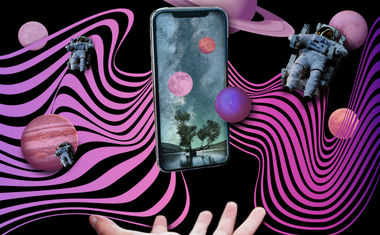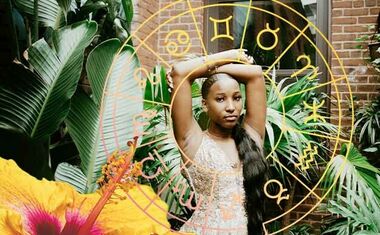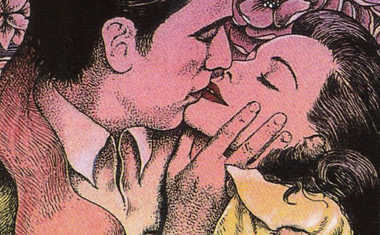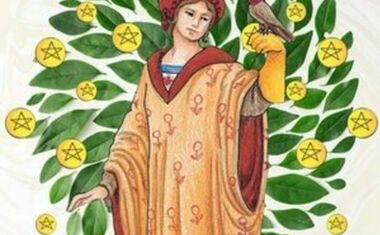
Religious Art and Magic
Magic and the Early Tarot
The occultist community is accustomed to thinking of the Roman Church as the enemy of Magic. We have already seen that the Church was the primary means for the preservation and dissemination of magical texts and that many forms of magic, such as astrological imagery in medical practice, were applauded. We have also seen that imagery related to the Art of Memory was an integral part of religious mysticism. Still, even the well-informed are often surprised to see the extent to which image magic played a role in Christian lay devotion.
The basis for religious imagery probably traces back to the early Desert Fathers (Carruthers and Ziolkowski 2002). Their meditation practices involved meditation postures, murmured phrases of memorized sacred text, and images. The images were both mental and physical and helped induce a magical divine 'seeing'. Strongly influenced by the mysticism of the Desert Fathers, imagery became an integral part of meditation and mysticism (Zinn 1972, 1975, 1986) and remained so throughout the middle ages. Angela of Foligno (13th century) had violent emotional responses to religious images that were an integral part of her mystical technique (Kamerick 2002). Henry Suso (~1295-1366) taught a mysticism that involved intense devotional response to religious images (Morgan 1998). Jeanne-Marie de Maille (b1331) used religious imagery to achieve altered states of consciousness and visions (Kamerick 2002). Even in the 15th century, as the Tarot was being designed, popular mystics such as Julian of Norwich (1342-1416) and Margery Kempe (~1372-1438) held fast to a mystical tradition in which sacred art was a conduit for achieving mystical states (Kamerick 2002). The use of imagery in mystical technique may seem far removed from magic in our minds, but everything was magical in the 15th century and, as we shall see, image magic was deeply embedded in the devotional use of religious imagery.
The magical connotations of images become clearer when we examine the physical theory of human vision that was prevalent at the time. Based on the Neoplatonic concept: "As above, so below" and writers such as Alhazen (c965-c1039), Roger Bacon (d~1292), and John Pecham (d1292) the bodily eye was considered parallel to the spiritual or mind's eye (Kamerick 2002). Thus, what one viewed was morally formative and led directly to spiritual understanding, even without any conscious thought. This magical effect of vision was considered to be empirically demonstrated by the emotive response that any viewer has to entering a great cathedral or confronting a wall frescoed with religious symbolism.
The physical theory was complemented by an orthodox principle established by Pope Gregory the Great (509-604). Gregory proclaimed that devotional art was legitimate and important since it provided a means by which the illiterate could learn their faith (Kamerick 2002). Thus, throughout the middle ages holy images formed a crucial and completely commonplace element in orthodox piety. Gregory's reasoning was still cited in the late middle ages, even as literacy increased.
In an age of belief it comes as little surprise, therefore, that religious imagery became magical. Sermons often drew their examples from hagiography, i.e., the lives of the Saints, available in collections such as the Golden Legend. Hagiography is full of examples of holy images as conduits of supernatural power (Kamerick 2002). The images produced visions, protected against enemies and the plague, and performed miracles. The images were unequivocally magical (Belting 1994).
Prayer books, especially Books of Hours, became increasingly available as literacy increased. Indeed, one of the motivations for Church sponsored education was so that the laity could read their prayer books. Like their counterparts in churches and shrines, book images served many purposes: meditational, devotional, and even quasi-magical. The illustrations served as a visual target for the eyes that steadied the heart and promoted concentration (Kamerick 2002). In addition, some prayer books promise that viewing particular images raised a magical shield against misfortune. These 'charms' could defend the soul and keeping it safe from the devil. Religious images can perform miracles (Aston 1993). Holy images and magic amulets merge.
Most of the texts that discuss the miraculous power of images deal with the inherent power of the image. Unlike some forms of medieval magic, few rituals are presented and there is no implication that the power is something created or controlled by the magician. Perhaps, by avoiding these pitfalls, image magic was deemed acceptable by theologians.
But the magic of religious images was not simply accepted by the Church. It was both encouraged and amplified through the granting of indulgences (Kamerick 2002). The Christians believed that sins, even though forgiven, still carried a 'karma' that must be burned off in Purgatory before the soul can enter heaven. An indulgence is an officially sanctioned means of wiping clean the 'karma' without the third-degree burns. Simple rituals, such as kneeling and saying a prayer before a particular image, were granted indulgences that removed, for example, 100 days spent in Purgatory. This officially sanctioned magic allowed one to enter a church as a sinner and, after a simple ritual, emerge a virgin (well, a moral virgin anyway).
Of potential interest to the Tarot enthusiast were the indulgences associated with images of the Arma Christi, the instruments of Christ's passion. The traditional Arma included, among other objects, the sword of the arresting soldiers, the rod holding up the sponge of vinegar, the cup that caught his blood, and the coins earned by sale of his clothing (Kamerick 2002). I have often wondered whether the early card-players saw the resemblance to the Tarot suits.
Another connection to the Tarot can be found in the symbolic images often incorporated into Psalters. The illustrations in these laic prayer books were not limited to biblical scenes. They often contained towers and trees drawn from the Art of Memory with magico-religious connotations discussed in the previous chapter. Some, such as the Psalter of Robert de Lisle (Sandler 1999), contain images also found in the Tarot, such as the Virtues, Heavenly Bodies, and the Wheel of Fortune.
The magical religious imagery was not only available to the wealthy who could afford a hand-painted Psalter nor was it only available in public places such as churches. The early wood-block printers, who also produced playing cards, produced 'holy cards' that placed religious magic into the hands of everyone (Hind 1935).
One of the oldest surviving wood-block 'holy cards' is the Madonna del Fuoco (Madonna of the Fire). This paper image is of interest for several reasons. The image, though unlikely to be a direct model for the Tarot, nevertheless bears a resemblance to the seated Empress and the background certainly contains the Moon and Sun. Second, the paper image still exists precisely because of its magical connotations. In 1428, a fire destroyed everything in the Forli school. Only this paper image produced about 1425 survived. It is little wonder, then, that in that age of belief, the miraculous image was moved in solemn procession to the cathedral. The image is believed to be magical protection against fire and other catastrophes (Belting 1994). Third, the city of Forli is only XX kilometers from Ferrara where we find the earliest reference to Tarot cards. Fourth, the original image was produced as a result of a commission from a Confraternity formed by the Salinari, the salt workers of Cervia (Belting 1994).
What the reader should take from this brief survey is that the 15th century card players did not see image magic as something occult or mysterious. They were surrounded by image magic in the form of religious art. In devout homes, they would perform a simple ritual like lighting a candle and kneel to say a prayer before a wood-block printed 'holy card'. They fully expected that the image would protect them from harm. Such image magic was not persecuted by the Church, it was sanctioned. There is no evidence that the card players saw the same magic in the Tarot cards that they obtained from the same woodblock printer. But, at the same time, it is not the outlandish leap of faith that some historians would make it.



